News:
The Nazis Looted Her Art. On October 7, Hamas Stole Another Sculpture
By Ofer Aderet
Does the work by a pioneering French-Jewish artist, looted by the Nazis 80 years ago, belong to a Jewish woman from London or the artist's granddaughter? And what does the affair have to do with the events of October 7?
Ariane Tamir was surprised to discover a statue made by her grandmother – the French-Jewish sculptor Chana Orloff – that had been stolen from her studio by the Nazis about 80 years ago, of which all trace had been lost.
The sculpture, of a nude woman on a chair, had been given two titles: Femme 39 (Woman 39) or Nu dans un fauteuil (Nude in an Armchair) was created in 1939 and stolen four years later. However, overshadowing Tamir's discovery was the fact that the current owner of the sculpture, a Jewish woman from London, was refusing to return it to her on the grounds that she had purchased it legally in 1985 from Sotheby's in Israel.
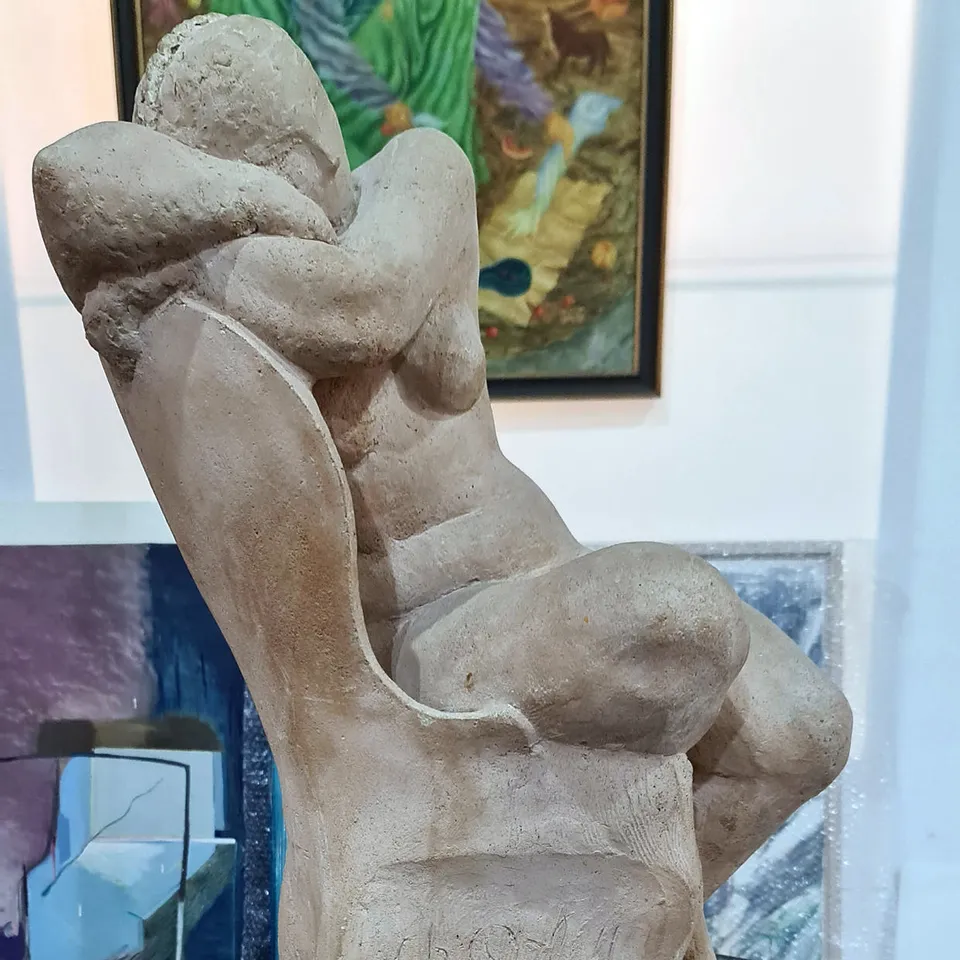
The sculpture of a nude woman on a chair, created in 1939 had been given two titles: Femme 39 (Woman 39) or Nu dans un fauteuil (Nude in an Armchair)
The affair began last August, when the veteran Tiroche Auction House, in Herzliya, received the sculpture by Orloff. The sender was Judita Hirsch from London, who asked the auction house to research the item to ascertain that it was authentic and not a fake, possibly in advance of deciding to sell it.
The auction house contacted Tamir, who is considered an authority in the field, as it had done in the past when works by her grandmother had been sent in for authentication. Tamir, who is a resident of Herzliya, confirmed the authenticity of the sculpture and thus discovered the big blot on its past: its presence on a number of international blacklists of works the Nazis had looted from Jews.
The discovery led to heated exchanges between Tamir and Hirsch, with the auction house caught in the middle. Orloff's family demanded that Tiroche hand the statue over to them and not return it to the sender, who demanded that it be sent back to her.
While the owner of the statue has not replied to Haaretz's questions about the matter, Ariane Tamir and her family filed a complaint with the French police – the sculpture was created in Paris, where a museum dedicated to the artist, the Ateliers-Musée Chana Orloff, is located in her old studio. "It has to be returned to the family, to Orloff's legal heirs, and displayed at her atelier in Paris," Amnon Tamir, Ariane Tamir's husband, told Haaretz.
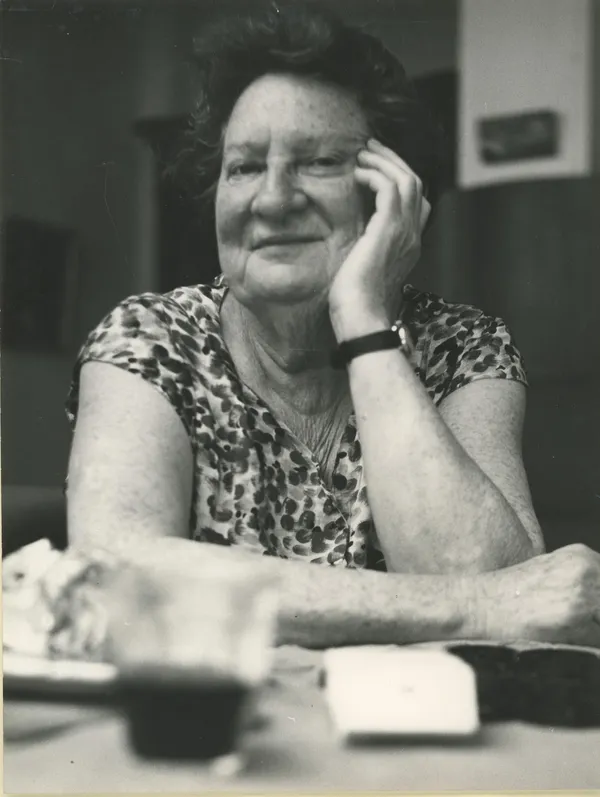 Renowned French Jewish artist Chana Orloff.
Renowned French Jewish artist Chana Orloff.
The Tiroche Auction House, where the statue has been in storage for four months now, recommended to both sides that they reach an arrangement, though but as of now nothing has been settled. "Tiroche is not a side or an interested party in the dispute. We are only waiting for the disagreement to be settled between the sides in order to remove from the gallery all the items belonging to the woman from London," according to its CEO, Amitai Hazan Tiroche.
However, about a week ago, Dov Hazan, the owner of the auction house, announced that he had decided to return the sculpture to the sender. Ariane Tamir told Haaretz: "Indeed there was talk of returning the sculpture to London, but about an hour after that conversation and after consulting our lawyer in Paris, I went back to the Tiroche offices and withdrew my agreement to sending the statue."
In a letter to Tiroche, she wrote, "Your cooperation with the side illegally holding a work of art that was looted by the Nazis does not accord with the professionalism and status of a respected auction house like Tiroche. I request once again that you avoid this situation and that you not send the statue to the woman, until the dispute is resolved."
As of now, the statue is still at the Tiroche gallery. In the wake of a request by the French Embassy in Israel to the Justice Ministry and the auction house, the return to the sender has been suspended until further notice.
In a chilling coincidence, another of Orloff's sculptures disappeared on October 7 from the home of Shoshan Haran, a grand-niece of Orloff's, in Kibbutz Be'eri, which is near Gaza. Haran, who was kidnapped with her family to the Gaza Strip and eventually released from Hamas captivity, discovered upon her return that her house was destroyed and traces of the statue had disappeared. In the family, they are wondering if a Hamas terrorist is now holding it.
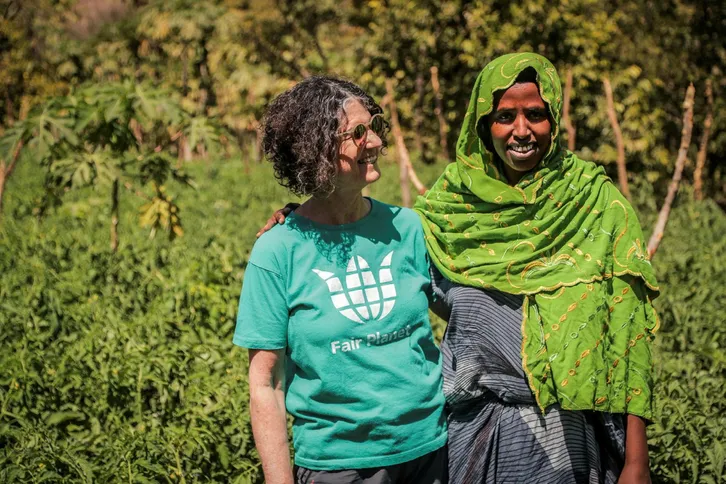 Shoshan Haran, left, and a farmer from Rwanda during a visit to the country in September, 2023.
Shoshan Haran, left, and a farmer from Rwanda during a visit to the country in September, 2023.
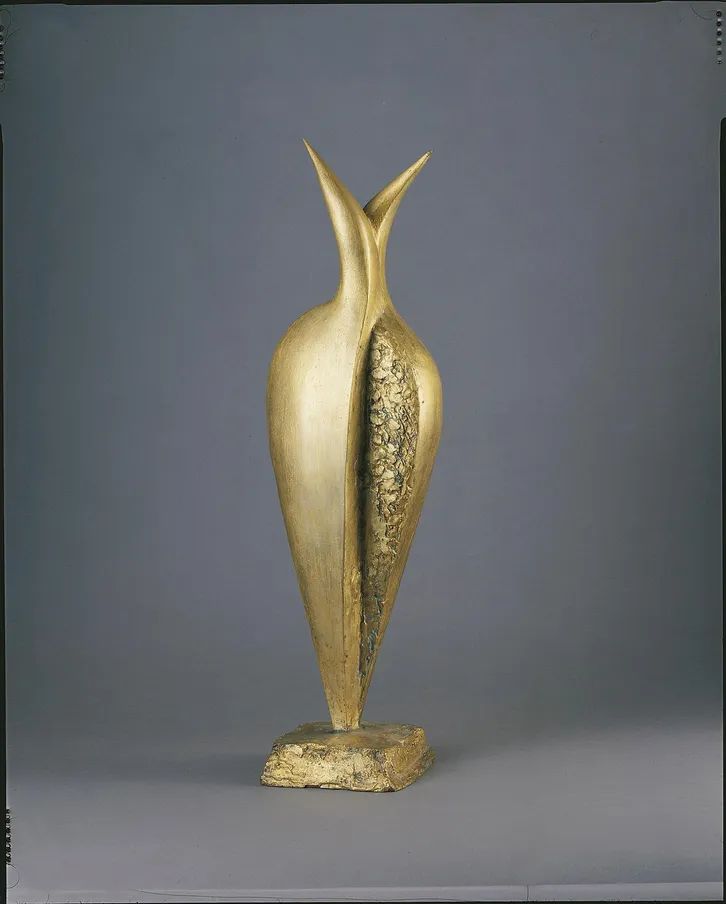
The sculpture stolen from the home of Shoshan Haran, who was abducted from Kibbutz Be'eri by Hamas terrorists on October 7
Orloff is considered a pioneer of female sculptors, who was active at a time when sculpture was considered a masculine art. She was born in 1888 in the small town of Tsaré-Constantinovska in today's eastern Ukraine, the eighth of nine children. Zvi Nishri (Orloff), one of her elder brothers, became a founder of the field of physical education in Israel and the first sports teacher at the Herzliya Hebrew Gymnasium.
In 1905, at the age of 17, Chana Orloff immigrated to Ottoman Palestine with her parents and sister Miriam, eventually the mother of former chief of staff Rafael Eitan (Raful). The family settled in Petah Tikva. Five years later, Chana left for Paris, where she married Polish-Jewish poet Ary Justman. Two years later, her only son Elie, known as Didi, was born. In 1919 Justman died of Spanish flu.
Orloff studied art at the École des arts décoratifs – the National School of Decorative Art – founded by Russian artist Marie Vassilieff. That was when she made her first sculpture, a portrait of her grandmother. At that time she began to grow close to the artists of the Paris School, the name given to a group of artists from other countries, many of them Jewish, who made a significant contribution to the the cultural flourishing of Paris before World War I. Among its members were the Italian painter Amadeo Modigliani and painter Chaim Soutine, who was born in Russia.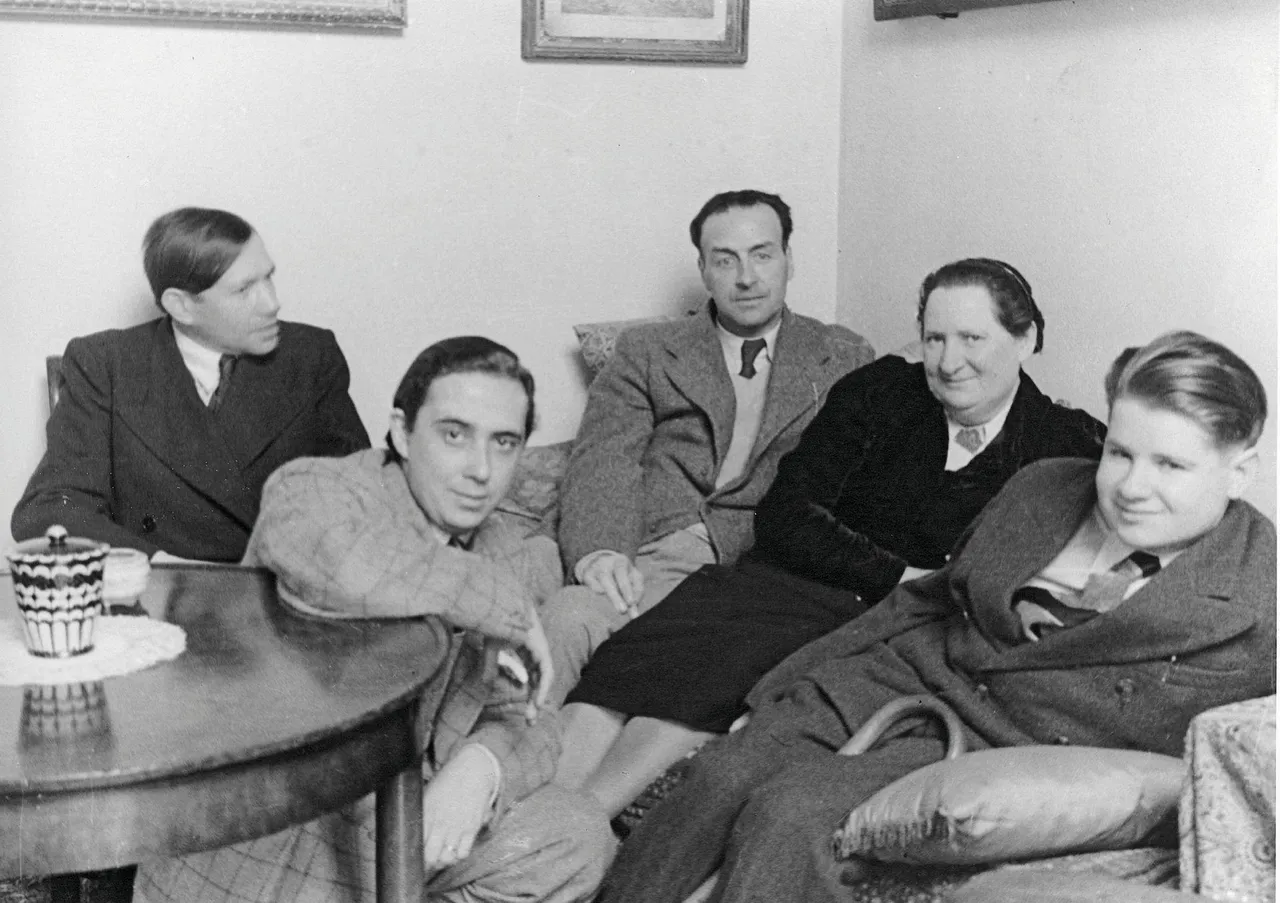
Orloff and artists in Paris, around 1935. From left to right: Chaim Soutine, Emilio Grau Sala, James Lloyd, Orloff and her son Didi
Her studio in the 14th Arrondissement was designed by renowned French architect Auguste Perret. She created hundreds of sculptures there, working with materials like wood, bronze, concrete and plaster. Many of her works are portraits of individuals, some of them famous, among them poet Chaim Nachman Bialik, artist Reuven Rubin and David Ben-Gurion. She also sculpted animals, among them squirrels, ostriches, cats, dogs and fish. "It would be possible to decorate our zoo with these statues," she said in an interview with the Zionist socialist newspaper Al Hamishmar in 1949 during a visit to Israel. In 1925, she was awarded the French Legion of Honor decoration.
In 1942, Orloff received a warning from two French friends of a planned official invasion of her home. She managed to flee from France, which was under Nazi rule, with her son to Switzerland, where she continued to sculpt. After the war she returned to Paris and discovered that her studio had been destroyed and plundered in 1943. Her home studio "had been systematically looted: Sculptures, furniture, paintings stolen, plaster, stone, wood broken, decapitated, mutilated. There is not an electrical outlet left, not a doorknob," she was quoted as having said, in a letter her granddaughter sent to the woman who is now claiming ownership of the stolen statue. 144 sculptures were stolen and only five of them have been returned to her family over the years. The last of these is a portrait in wood of Chana's son, Ariane's father. In January of this year, it was returned from New York to the atelier in Paris.
Upon her return to France, Orloff restored her studio in Paris and continued working there. She showed her work internationally and kept in touch with Israel, visiting and working there. After her visit in 1949, journalist Pola Appenszlak wrote of her in Al Hamishmar: "Her tall, strong figure testifies to great resilience and a strong character – that is the portrait of the face that looks as though it was hewn from rock. It is the energetic nose of a strong character, the broad, high forehead the lovely curve of which she hid in her youth because she was too tall. Her eyes are blue with a piercing gaze. Her face is of a fresh hue and radiates almost countryside-like health."
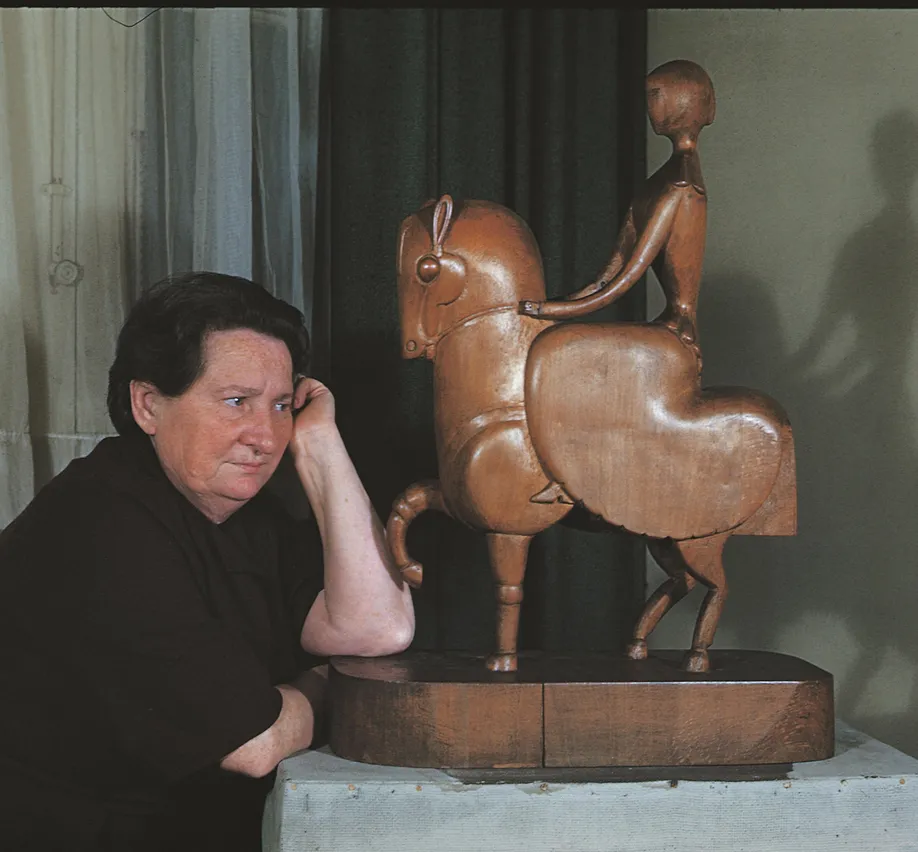
Chana Orloff alongside one of her works, in the 1950s. She had immigrated to Palestine but moved to France before the war and died at the age of 80 on a visit to Israel.
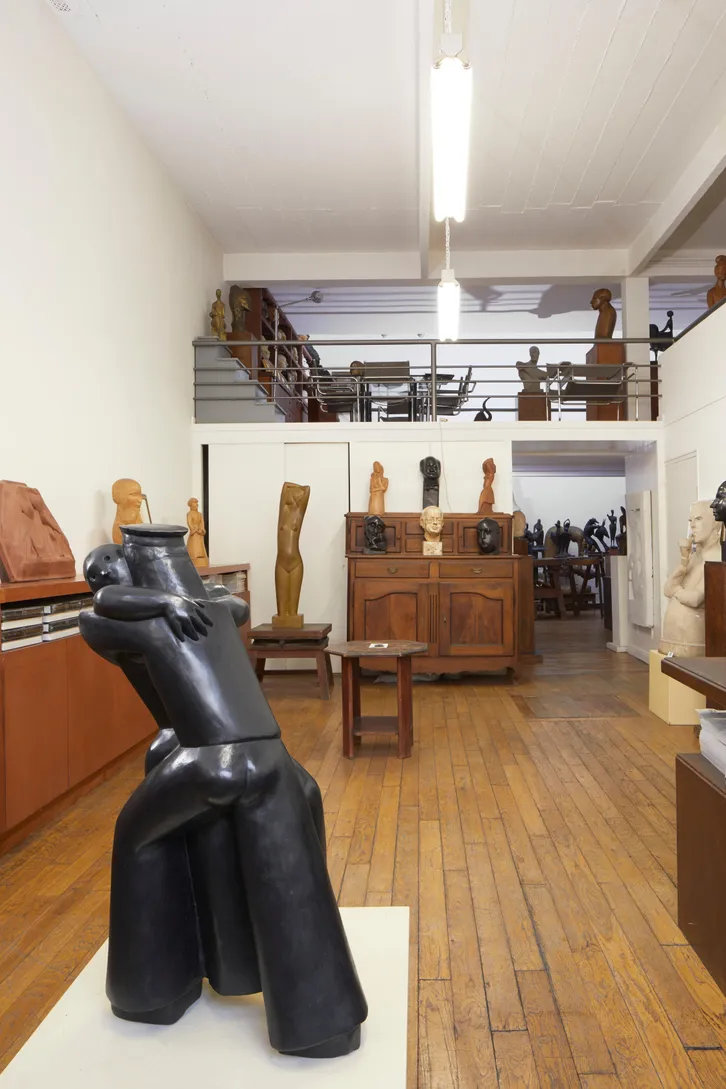
Inside Chana Orloff's studio.
Journalist Oury Kessary wrote about her in the mass circulation daily Ma'ariv in 1969: "Chana Orloff carries within herself a blend of physical and mental strength that is not found every day in a woman. Her Jewish humor will help save her from generalizations."
Orloff's works have been shown, inter alia, at the Mishkan Museum of Art at Ein Harod, the Tel Aviv museum of Art, the Israel Museum in Jerusalem, Bezalel and the Haifa Museum. Among her well-known works are "Portrait of Shmaryahu Levin" – a prominent Zionist thinker and activist (1920), "Mother and Child" (1924), "Portrait of Hanna Rovina" – a great Habimah actress and a monument commemorating Irgun activist Dov Gruner (1958).
In 1968, on a visit on the occasion of an exhibition of her works at the Tel Aviv Museum in honor of her 80th birthday, she became ill and died. She is buried in the Kiryat Shaul Cemetery in Tel Aviv. The now defunct newspaper Davar associated with the Histadrut Labor Federation reported that her coffin was rested at the Helena Rubinstein Museum in Tel Aviv "as a guard of honor stood beside it and many people paid their respects." Among those present at her funeral were Miriam Eshkol, the wife of the prime minister at the time, the mayor of Tel Aviv Mordecai Namir and "artists, sculptors, theater people and many admirers of the deceased."
Organized Nazi theft
Experts estimate that under the Nazi regime between 1933 and 1945 , around 600,00 works of art were plundered in Europe from Jewish artists and collectors by the Germans and their collaborators. Some of those works were privately owned and others were owned by museums and government institutions. The looting was mostly from institutions and was done, in part, under the supervision of a special unit commanded by Alfred Rosenberg, who was responsible for administering the occupied territories in the east. Aspart of "Operation Rosenberg," extensive robberies of Jewish property took place throughout the area of the German occupation, and especially in the countries of western Europe.
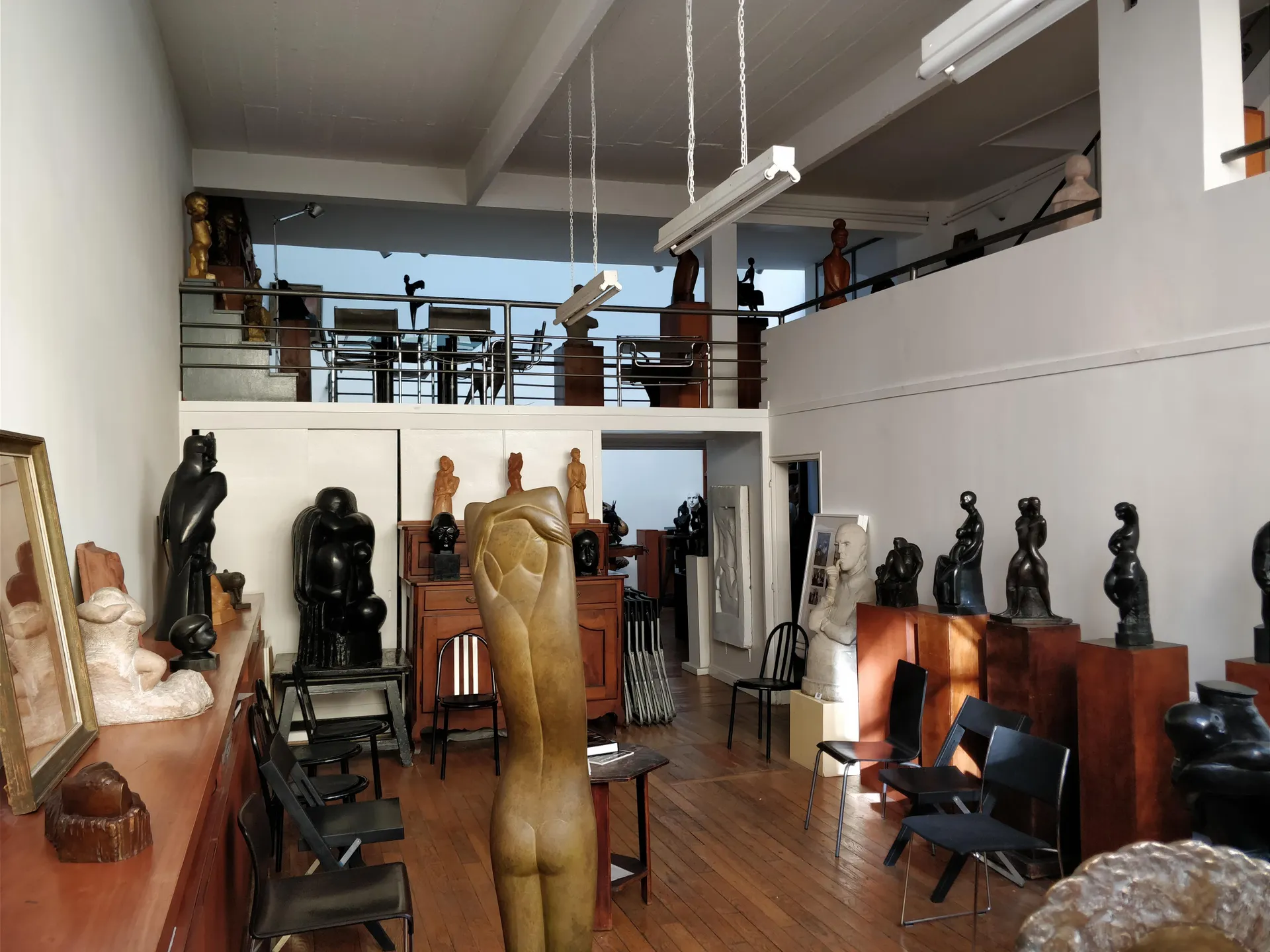
Orloff's studio in Paris, where her works are displayed.
After the war, the Allied Forces located large numbers of stolen works of art and items of cultural value. Most of the works were returned to their countries of origin on the assumption – which did not also prove correct – that each government would locate the owners and return the stolen property to them. The return of cultural assets was dealt with for many years by various international mechanisms, and was discussed at conferences and in agreements that were signed in their wake. As a result, for years now in the world at large there have been mechanisms in operation to locate and return works of arts the Nazis stole from Jews. Various countries, among them Germany, Austria, France, Holland and Britain have laws and ordinances on the issue.
The French government estimates that 100,000 works of art were plundered in its territory from Jews during the Holocaust. After the war, about 60,000 works were returned to France, of which approximately 45,000 were restored to their owners and their heirs in the following years. The rest of the works, which were not claimed, were kept by the French national museums and most of them were sold over the years at auctions. About 2,100 works that are considered have the most cultural value were declared to constitute a national collection with special status, and have been handed over for conservation and display to the leading museums in France, mainly the Louvre. Since 1999 a special commission has been active in France for compensating the victims of looting, including looting of works of art. As of 2018, the commission had granted compensation totaling $55 million to heirs.
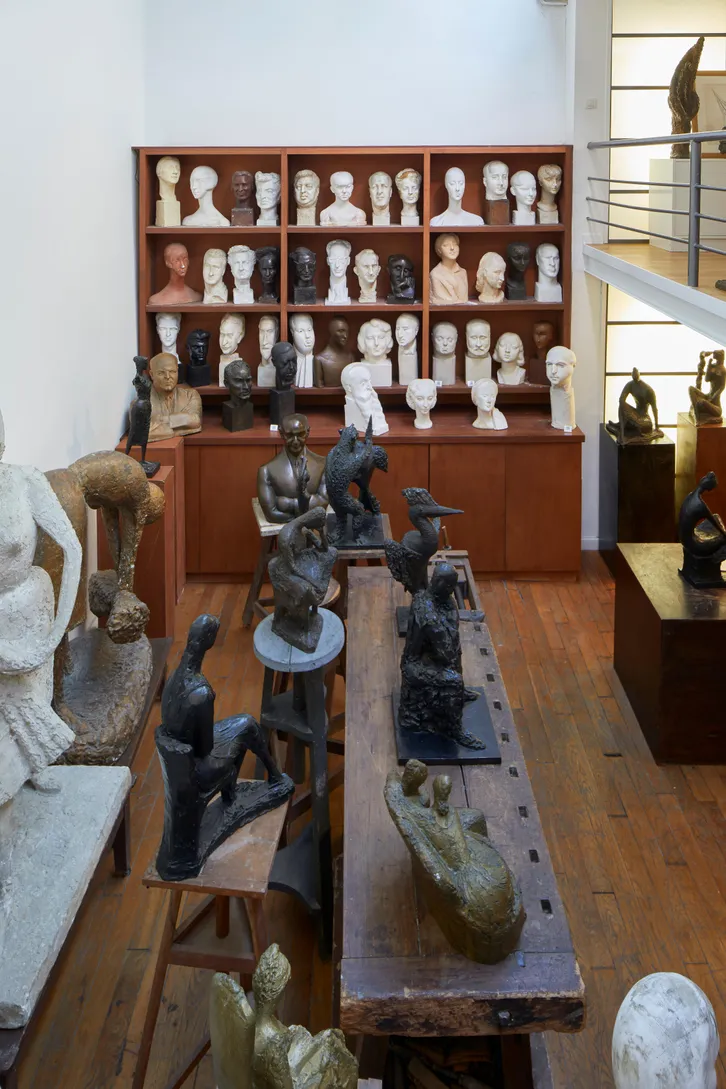
Inside Orloff's studio in Paris. Many of her works are portraits of individuals, some of them famous, including poet Chaim Nachman Bialik and David Ben-Gurion.
Orloff's stolen statue is challenging this system: It was created in France, it is now located in Israel but it is under the ownership of a British woman. Towards the end of World War II and in the years after it, cultural assets that were stolen from Jews arrived in Israel in various ways. Most of these items are held in various museums and in the National Library.
The subject of restoring the works to their owners has come up for discussion over the years in various government settings and at some of the museums. The State Controller's Office has determined that in light of the moral and historical obligation, Israel must take the initiative to locate the stolen works in its territory and return them to their owners.
The most recent Holocaust Martyrs and Heroes Memorial Day this past spring saw the publication of a report of an inter-ministry team – "the team for the arranging of investigation of the origins of cultural assets stolen during the Holocaust that are present in Israel" – which proposed a legislative arrangement whereby various bodies in Israel will act towards restoring stolen works to their owners or heirs. However, the Issue is still up in the air.


